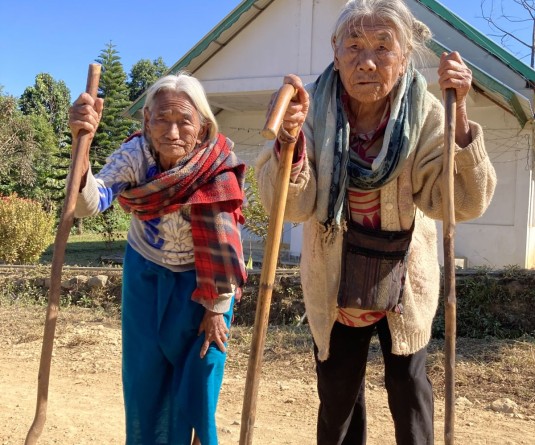
Patu Khate Zeliang
KVK Peren, ICAR Nagaland Centre
Introduction
Seed is the basic and primary requisite and most critical input for successful crop production. A good quality seed must conform to the following standards.
Genetic purity - It is the true to type nature of the seed, i.e. the seedling or plant or tree from the seed should resemble its parent in all aspects.
Physical quality - It should have uniform size, weight, colour and should be free from stones, debris, dust, leafs, twigs, stems, flowers, fruits, other crop seeds as well as from diseased and insect damaged seed.
Physiological quality- It is the actual expression of seed in further generation or multiplication. It comprises of seed germination and seed vigour. The extent of liveliness for production of good seedling with normal root and shoot under favourable condition is known as germinability. Seed vigour is the energy or stamina of the seed in producing elite seedlings, which determines the level of performance of seed or seed lot during germination and seedling emergence.
Why seed production
Seed production is essential for following reasons-
• In agricultural and horticultural crops 70% seed used are sourced from the farmers. Securing quality in these seeds can increase their productivity by 17-25%.
• There is limited or no source of quality seed readily available in the state.
• Farmers are so poor that they consume their reserved seed stock.
Cultural practices
Some of the cultural practices to be followed in seed production are -
1. Nursery: This is necessary for successful vegetable & seed production. Site of nursery should be safe, sunny, and free from soil-borne diseases. Seeds should be planted 5-7 cm below the soil layer. Seedlings are transplanted at 6-7 cm growth.
2. Soil preparation: The soil should be prepared by ploughing and harrowing 3-4 times, followed by breaking of clods.
3. Fertilizer and FYM application: These contribute to fertility of the soil by adding organic and inorganic nutrients. They also improve soil physical properties like structure and water holding capacity. Plant parasitic nematodes and fungi are controlled to some extent by altering the balance of microorganisms in the soil.
4. Irrigation: Regular and assured irrigation should be maintained.
5. Mulching: Reduce runoff and soil erosion. It also improves fertility and health of the soil, and reduces weed growth.
6. Thinning: is selective removal of plants to make room for the better growth of others. It is important for directly sown seeds e.g.okra, peas, beans etc.
7. Earthing up: is done by drawing soil up around the base of plants to make it stable and encourage stem and tuber growth. This is the most important operation in vegetable crop cultivation.
8. Wind breaks: is a shelterbelt of plantation usually made up of one or more rows of trees or shrubs planted in such a manner as to provide shelter from the wind and to protect soil from erosion. This is important during flowering, pod/fruit setting and minimize heavy losses.
9. Staking: Many plants as they mature need support to help them grow. e.g.cucurbits, tomatoes, beans, squash etc.
10. Isolation distance: Maintaining proper isolation distance is a must for obtaining pure seeds of any particular variety. The isolation distance is decided based on the nature of pollination in a particular crop and the class of seed being raised. e.g. maize, cucumber.
11. Rogueing: It is the act of identifying and removing plants with undesirable characteristics like off types, diseased plants, wild plants etc from agricultural fields to preserve the quality of the crop being grown.
12. Field inspections: Checking and inspecting the field thoroughly for insects, disease, pests, weeds etc.
13. Seed extraction: General recommendation is to extract the seeds from fleshy, pulpy fruits rather than drying the fruit since dried fruit pulp normally inhibits germination to some extent. The seed are separated from pulp and then dried under partial shade as in, tomato, pumpkin, cucumber etc.
Conditions favoring seed production in Nagaland
• Cool temperature and well distributed rainfall.
• Soils are generally fertile and rich in organic matter.
• Availability of well drainage system facilities in the hills.
• High demand of good quality seeds and its production can give good remunerative returns.
• Isolation distance- Topography of hilly region comprising of forest, rivers and valleys acts as natural barrier to produce genetically pure seeds.
• Pollinators are plenty and there are less pests and diseases.
• Availability of labour.
Future strategies
For conduction of a successful seed production programme, some of the strategies to be adopted are:
• Improved cultural practices should be followed.
• Selection of independent zone for each variety/ vegetable with natural barrier.
• Proper and detailed study conducted to ascertain demand of vegetable and seed need or requirement worked for supply.
• Community seed banking and exchange.
• Last but not least a willingness to embrace change or responsive to change by the people.
Conclusion
Quality seed production as an enterprise can solve the problem of scarcity or non-availability of quality seeds or seed materials locally or in remote areas. With some dedication, skill and effort, the farmers and rural youths can go for quality seed production and can create employment as well as avenues for revenue generation. For quality seed production, investments may be higher and more input maybe required, however the profit that is obtained from a successful production makes it worthwhile.




